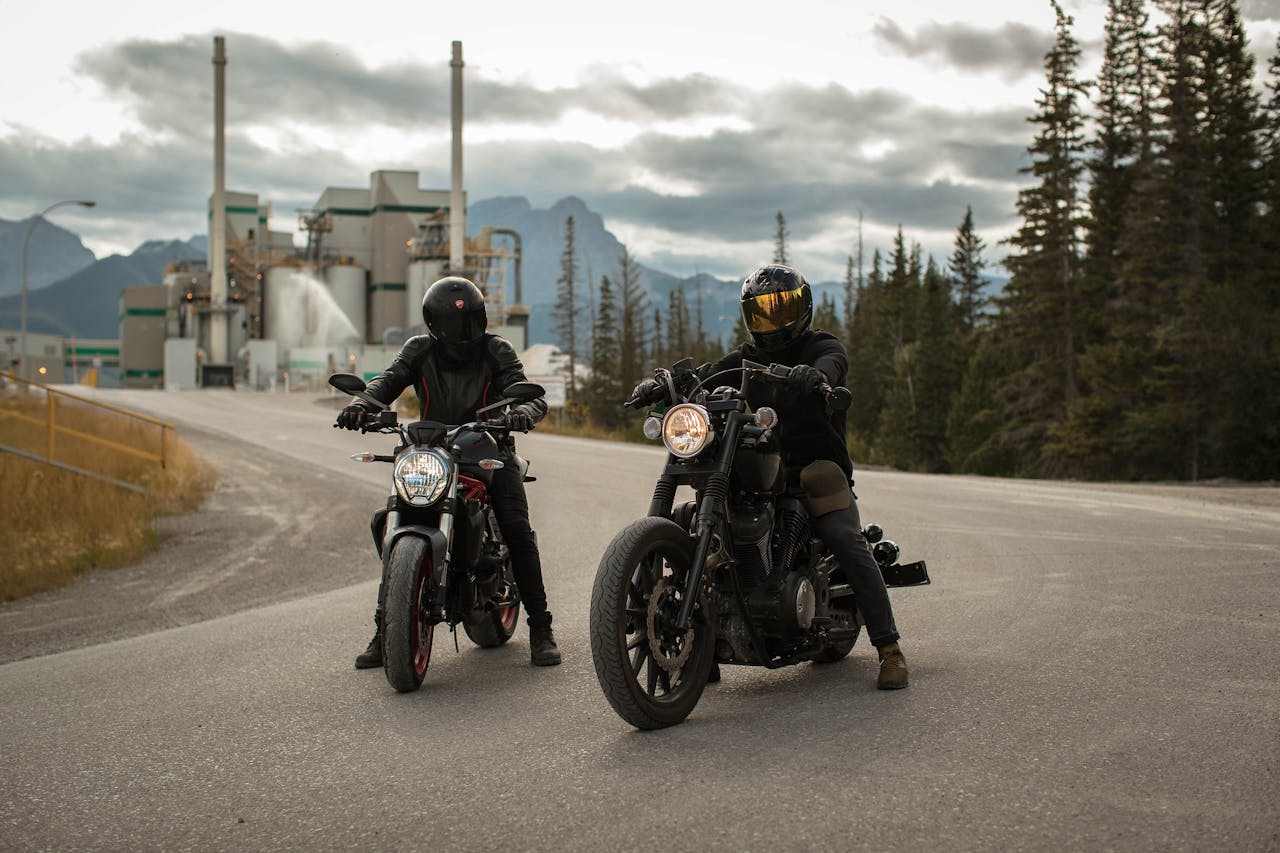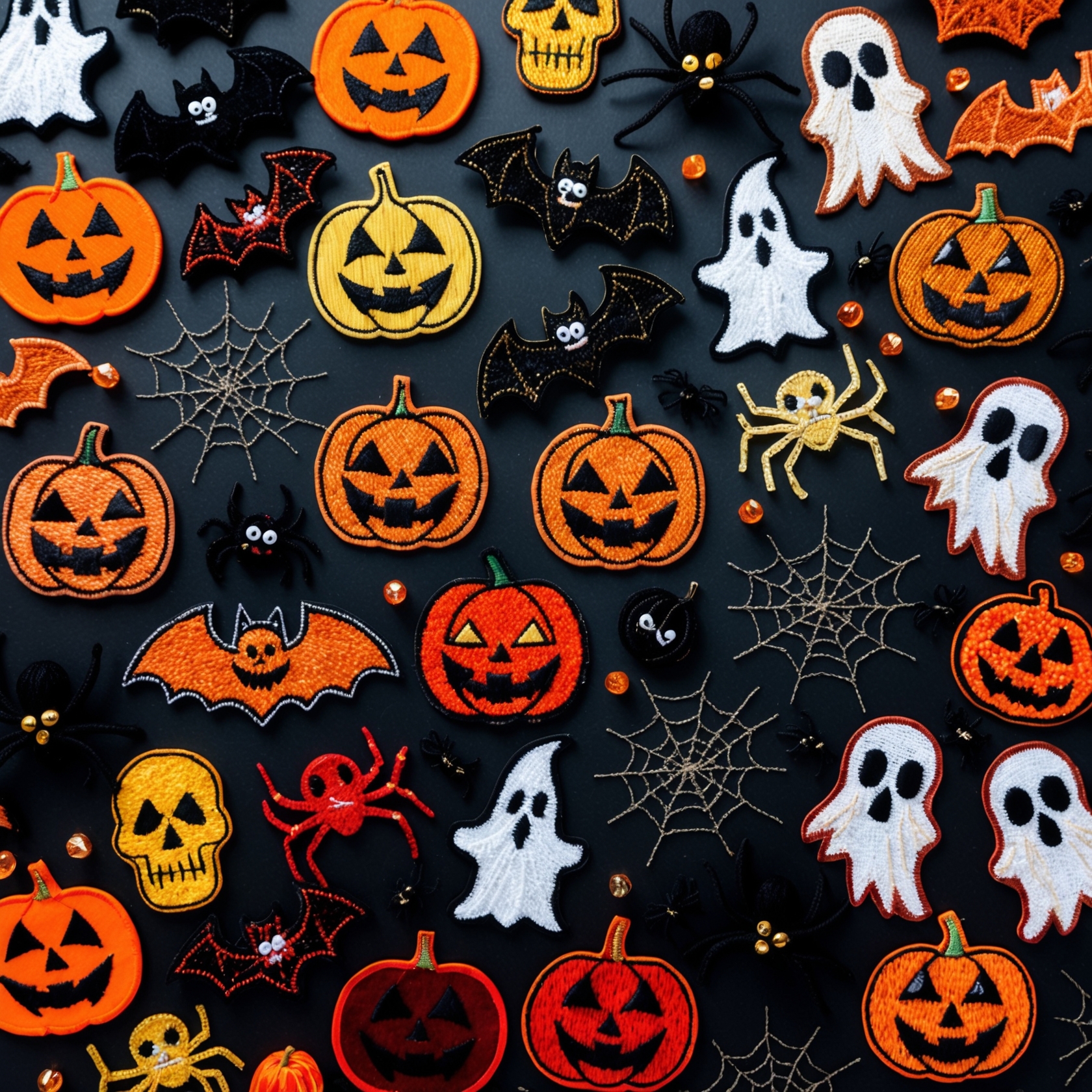Motorcycle culture is rich with symbolism, camaraderie, and a sense of identity that transcends the open road. Among the most recognizable symbols within this culture are biker patches. These patches are not merely decorative; they are powerful emblems that convey a rider’s allegiance, values, and status within the motorcycle community. From outlaw biker clubs to independent riders, biker patches play a significant role in shaping the culture, traditions, and social dynamics of motorcycle enthusiasts worldwide. In this article, we will explore how patches have become symbols of identity, examining their history, meaning, and impact on motorcycle culture.
The History of Biker Patches
The Origins of Biker Patches
Biker patches trace their origins back to the early days of motorcycle clubs in the post-World War II era. As veterans returned home from the war, many sought the thrill and camaraderie they experienced during the conflict, leading to the formation of motorcycle clubs. These clubs provided a sense of brotherhood and belonging, and patches became a means of identifying members and expressing loyalty to the group.
- Post-War Motorcycle Clubs: The end of World War II saw a surge in the popularity of motorcycles among veterans. Many of these veterans were seeking the same sense of adventure and camaraderie they had during the war. Motorcycle clubs provided an outlet for this, and patches quickly became a symbol of membership and identity within these groups.
- Military Influence: The design and use of patches were heavily influenced by military insignia. Many veterans incorporated military symbols, ranks, and unit patches into their biker gear, creating a direct link between their military service and their new life as bikers.
The Rise of Outlaw Motorcycle Clubs
The 1950s and 1960s marked the rise of outlaw motorcycle clubs, often referred to as “1%er” clubs, a term derived from the American Motorcyclist Association’s (AMA) statement that 99% of motorcyclists were law-abiding citizens. The remaining 1% embraced a rebellious, non-conformist lifestyle, and patches became a defining feature of their identity.
- Outlaw Biker Patches: Outlaw motorcycle clubs, such as the Hells Angels, the Outlaws, and the Bandidos, adopted distinctive patches that set them apart from mainstream society. These patches often featured skulls, wings, and other symbols of rebellion and defiance. The three-piece patch, consisting of a top rocker (club name), a central logo (club emblem), and a bottom rocker (territory or chapter), became the standard for these clubs.
- The 1%er Patch: The “1%er” patch is a small diamond-shaped patch worn by members of outlaw motorcycle clubs. It symbolizes the wearer’s allegiance to the outlaw lifestyle and their rejection of societal norms. This patch is one of the most significant symbols in the world of biker patches, representing a commitment to the club and its values.
The Evolution of Biker Patches
As motorcycle culture grew and diversified, so did the use of biker patches. Today, biker patches are used by a wide range of clubs, organizations, and individual riders, each with its own unique designs and meanings.
- Independent Riders and Custom Patches: Not all bikers belong to clubs, and many independent riders create custom patches to express their personal identity and interests. These patches can range from humorous slogans to intricate designs that reflect the rider’s lifestyle, beliefs, or achievements.
- Motorcycle Clubs and Associations: Beyond outlaw clubs, many motorcycle clubs and associations use patches to identify their members and promote their values. These clubs may focus on charity work, social events, or specific types of riding, such as touring or racing. Their patches often feature more positive imagery, such as eagles, flags, or religious symbols, reflecting their mission and ethos.
The Symbolism and Meaning Behind Biker Patches
Club Identity and Allegiance
At the heart of every biker patch is a deep sense of identity and allegiance to a particular club or group. Biker patches are more than just decorations; they are powerful symbols that convey membership, loyalty, and the values of the club.
The Three-Piece Patch
The three-piece patch is the most iconic and widely recognized biker patch, particularly among outlaw motorcycle clubs. Each piece of the patch has a specific meaning and significance.
- Top Rocker: The top rocker usually displays the name of the club, such as “Hells Angels” or “Outlaws.” This rocker is often the most prominent part of the patch, symbolizing the rider’s primary allegiance to the club.
- Center Patch (Colors): The center patch, often referred to as the “colors,” features the club’s emblem or logo. This emblem is unique to the club and is often protected with great pride. The colors represent the club’s identity, values, and reputation.
- Bottom Rocker: The bottom rocker typically displays the territory or chapter to which the member belongs. This can be a city, state, or region, and it signifies the rider’s connection to a specific geographic area. In some cases, the bottom rocker may also indicate the member’s rank or status within the club.
1%er Patch
The “1%er” patch is a symbol of defiance and rebellion within the biker community. It is worn by members of outlaw motorcycle clubs who embrace the outlaw lifestyle and reject mainstream societal norms.
- Commitment to the Club: Wearing the 1%er patch is a declaration of total commitment to the club and its values. It signifies that the wearer is willing to live by the club’s code and accept the consequences of their actions.
- Rejection of Society: The 1%er patch also represents a rejection of conventional society and its rules. It is a symbol of the wearer’s willingness to live outside the law and embrace a lifestyle of freedom, risk, and brotherhood.
Personal Identity and Expression
Beyond club membership, biker patches also serve as a means of personal expression. Riders use patches to convey their beliefs, achievements, and unique personalities.
Custom Patches
Many riders create custom patches that reflect their personal identity, interests, or sense of humor. These patches may be worn alongside club patches or on their own, depending on the rider’s preference.
- Slogans and Sayings: Custom patches often feature slogans or sayings that reflect the rider’s philosophy or outlook on life. These can range from serious statements, such as “Live to Ride, Ride to Live,” to humorous quips, like “If You Can Read This, The Bitch Fell Off.”
- Hobbies and Interests: Riders may also create patches that reflect their hobbies, interests, or favorite activities. For example, a rider who enjoys camping might have a patch with a tent and campfire, while a rider who is passionate about classic cars might have a patch featuring a vintage vehicle.
Achievement and Milestone Patches
Biker patches are also used to commemorate personal achievements and milestones within the motorcycle community. These patches serve as a testament to the rider’s experiences and accomplishments.
- Mileage Patches: Some riders earn patches based on the number of miles they have ridden. These patches may be awarded by clubs, organizations, or even created by the rider themselves to mark significant distances, such as 10,000 or 100,000 miles.
- Event Patches: Event patches are awarded to riders who participate in specific motorcycle rallies, rides, or gatherings. These patches serve as mementos of the event and are often proudly displayed on the rider’s vest or jacket.
- Veteran Patches: Military veterans who ride motorcycles may wear patches that reflect their service, such as a branch of service, unit insignia, or medals. These patches serve as a symbol of pride and honor, connecting the rider’s military identity with their life as a motorcyclist.
The Role of Biker Patches in Motorcycle Culture
Brotherhood and Camaraderie
Biker patches play a central role in fostering a sense of brotherhood and camaraderie within the motorcycle community. They are symbols of the bonds that unite riders, both within clubs and as part of the larger biker culture.
Club Loyalty and Unity
For members of motorcycle clubs, wearing the club patch is a sign of loyalty and unity. It signifies that the wearer is part of a close-knit group that shares common values, experiences, and goals.
- Shared Identity: Club patches create a shared identity among members, reinforcing the sense of belonging and commitment to the group. When riders wear their patches, they are publicly declaring their allegiance to the club and its values.
- Support and Brotherhood: Biker patches also symbolize the support and brotherhood that exists within the club. Members rely on each other for protection, companionship, and assistance, and the patch serves as a visible reminder of this bond.
Respect and Recognition
Within the broader motorcycle community, biker patches are a way of earning and showing respect. They convey a rider’s experience, status, and reputation, and are often used as a form of recognition among peers.
- Respect Among Riders: Riders often respect each other based on the patches they wear. For example, a rider with a well-worn vest covered in event patches may be seen as an experienced and seasoned motorcyclist, deserving of respect from other riders.
- Recognition of Clubs: Biker patches also serve as a means of recognizing and acknowledging different clubs. When riders from different clubs meet, they can quickly identify each other’s affiliations and show mutual respect based on the patches they wear.
Biker Patches as a Form of Rebellion
For many bikers, patches are not just symbols of identity; they are also expressions of rebellion and non-conformity. This aspect of biker culture has its roots in the outlaw clubs of the 1950s and 1960s, but it continues to influence the way patches are used today.
Anti-Establishment Symbols
Biker patches often incorporate symbols that challenge or reject mainstream society and its values. These symbols reflect the rebellious spirit that is central to much of motorcycle culture.
- Skulls and Crossbones: Skulls, crossbones, and other macabre imagery are common in biker patches, symbolizing a disregard for death and danger. These symbols also reflect a rejection of societal norms and an embrace of the outlaw lifestyle.
- Iron Cross: The Iron Cross is another symbol often found in biker patches. Originally a German military decoration, it has been adopted by some bikers as a symbol of defiance and anti-establishment sentiment. However, it is important to note that the meaning of this symbol can vary, and it may be seen differently in different cultural contexts.
Expression of Freedom
Biker patches also symbolize the freedom and independence that many riders cherish. The open road, the wind in their hair, and the sense of adventure are all central to the motorcycle experience, and patches help to express this lifestyle.
- Freedom of the Road: Patches that feature images of motorcycles, highways, or open landscapes often reflect the rider’s love of the freedom that comes with riding. These patches are a celebration of the open road and the sense of liberation that comes with it.
- Individuality: For many riders, biker patches are a way to express their individuality and stand out from the crowd. Custom patches, in particular, allow riders to create a unique identity that reflects their personality, values, and experiences.
The Commercialization of Biker Patches
In recent years, biker patches have become increasingly commercialized, with patches being produced and sold to a broader audience beyond the traditional motorcycle community. While this trend has made biker patches more accessible, it has also sparked debate within the motorcycle culture about authenticity and the true meaning of these symbols.
Mass Production and Retail Sales
The mass production and retail sale of biker patches have made it easier for non-riders to purchase and wear these symbols, often without understanding their significance.
- Fashion vs. Identity: For some, biker patches have become a fashion statement rather than a symbol of identity. Patches with skulls, wings, and other biker motifs are now commonly found on clothing, accessories, and home decor, catering to a mainstream audience.
- Impact on Authenticity: The commercialization of biker patches has raised concerns within the motorcycle community about the dilution of their meaning. For many riders, wearing a biker patch without earning it or understanding its significance is seen as disrespectful to the culture and traditions of the motorcycle community.
Collecting and Trading Biker Patches
Despite concerns about commercialization, biker patches remain a popular collectible item among riders and enthusiasts. Collecting and trading patches is a way for riders to share their experiences, commemorate events, and connect with others who share their passion for motorcycles.
- Patch Collecting: Many riders collect patches from the various events, rallies, and rides they attend. These patches serve as a visual record of their experiences and achievements within the motorcycle community.
- Trading Patches: Patch trading is a common practice at motorcycle rallies and events. Riders exchange patches with each other as a way of building connections and showing mutual respect. Trading patches allows riders to expand their collections and share their stories with others.
The Future of Biker Patches
As motorcycle culture continues to evolve, so too will the use and significance of biker patches. While traditional clubs and symbols remain a central part of the culture, new trends and technologies are likely to shape the future of biker patches.
Digital Patches and Online Communities
The rise of digital technology and social media has created new opportunities for bikers to connect and share their identities online. Digital patches and virtual motorcycle clubs are emerging as a new way for riders to express their identity and connect with others.
- Virtual Motorcycle Clubs: Online communities and virtual motorcycle clubs allow riders to connect with others who share their interests, regardless of geographic location. Digital patches, often displayed on social media profiles or within online forums, serve as a modern-day equivalent of traditional biker patches.
- Augmented Reality Patches: Augmented reality (AR) technology could lead to the development of digital biker patches that can be viewed through smartphones or AR glasses. These patches could include interactive elements, such as animations, videos, or links to online content, adding a new dimension to the biker patch experience.
Sustainability and Eco-Friendly Patches
As environmental concerns become increasingly important, some riders and clubs are exploring the use of sustainable and eco-friendly materials for their biker patches.
- Recycled Materials: Some manufacturers are beginning to offer biker patches made from recycled materials, such as reclaimed fabric or plastic. These patches provide a way for riders to express their identity while minimizing their environmental impact.
- Biodegradable Patches: The development of biodegradable patches could provide a more environmentally friendly option for temporary or event-specific patches. These patches would break down naturally over time, reducing waste and environmental impact.
The Preservation of Tradition
Despite the emergence of new trends and technologies, many riders remain committed to preserving the traditional symbols and meanings of biker patches. The importance of earning a patch, understanding its significance, and respecting the culture it represents continues to be a central value within the motorcycle community.
- Educating New Riders: As motorcycle culture continues to attract new riders, there is a growing emphasis on educating newcomers about the history and significance of biker patches. Clubs and veteran riders play a key role in passing down the traditions and values associated with these symbols.
- Honoring the Past: Many riders and clubs continue to honor the legacy of early motorcycle clubs and the pioneers of biker culture. By preserving traditional designs, symbols, and rituals, they ensure that the rich history of biker patches remains a vital part of the motorcycle community.
Conclusion
Biker patches are more than just pieces of cloth; they are powerful symbols that shape and define motorcycle culture. From their origins in post-war motorcycle clubs to their role in modern biker identity, these patches convey a deep sense of belonging, rebellion, and personal expression. Whether worn by members of outlaw clubs, independent riders, or casual enthusiasts, biker patches continue to play a central role in the motorcycle community.
As the culture evolves, so too will the use and significance of biker patches. New technologies, materials, and trends will undoubtedly influence the future of these symbols, but the core values they represent—brotherhood, freedom, and identity—will remain unchanged. For riders around the world, biker patches will always be a powerful way to express who they are and what they stand for, both on and off the road.
If you are interested in ordering some high-quality custom patches, feel free to call us at 877-912-6407 or fill out a FREE quote here.




